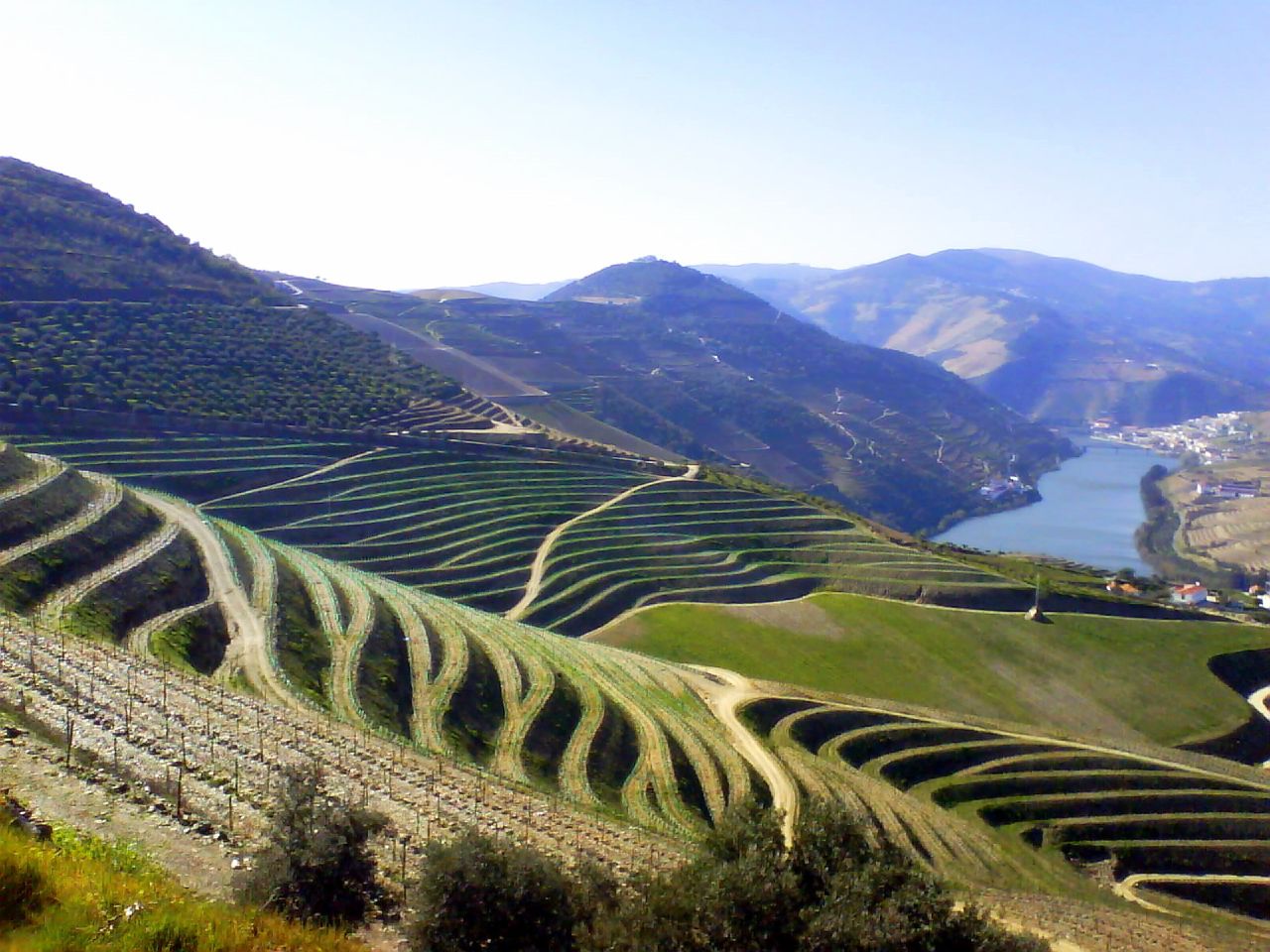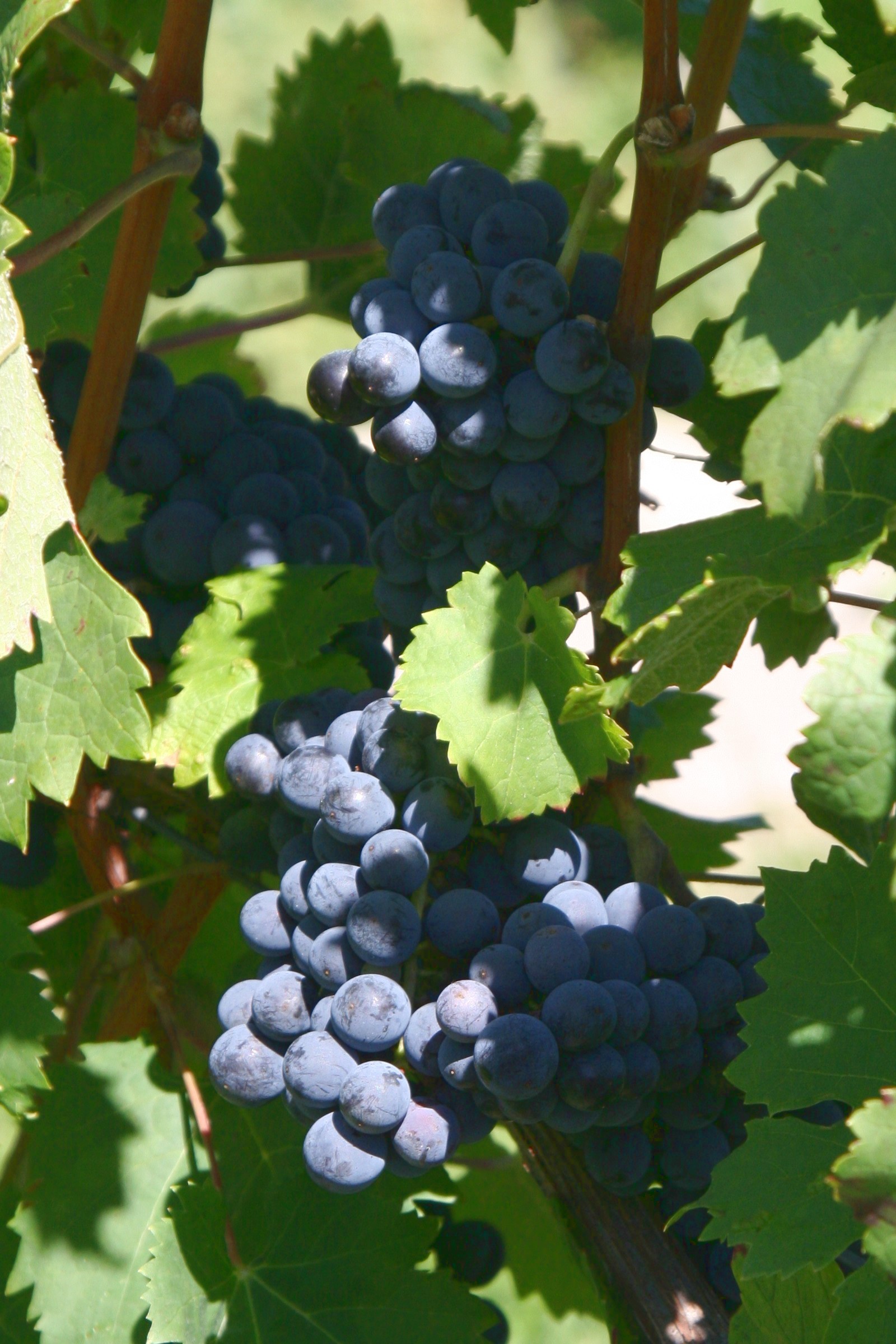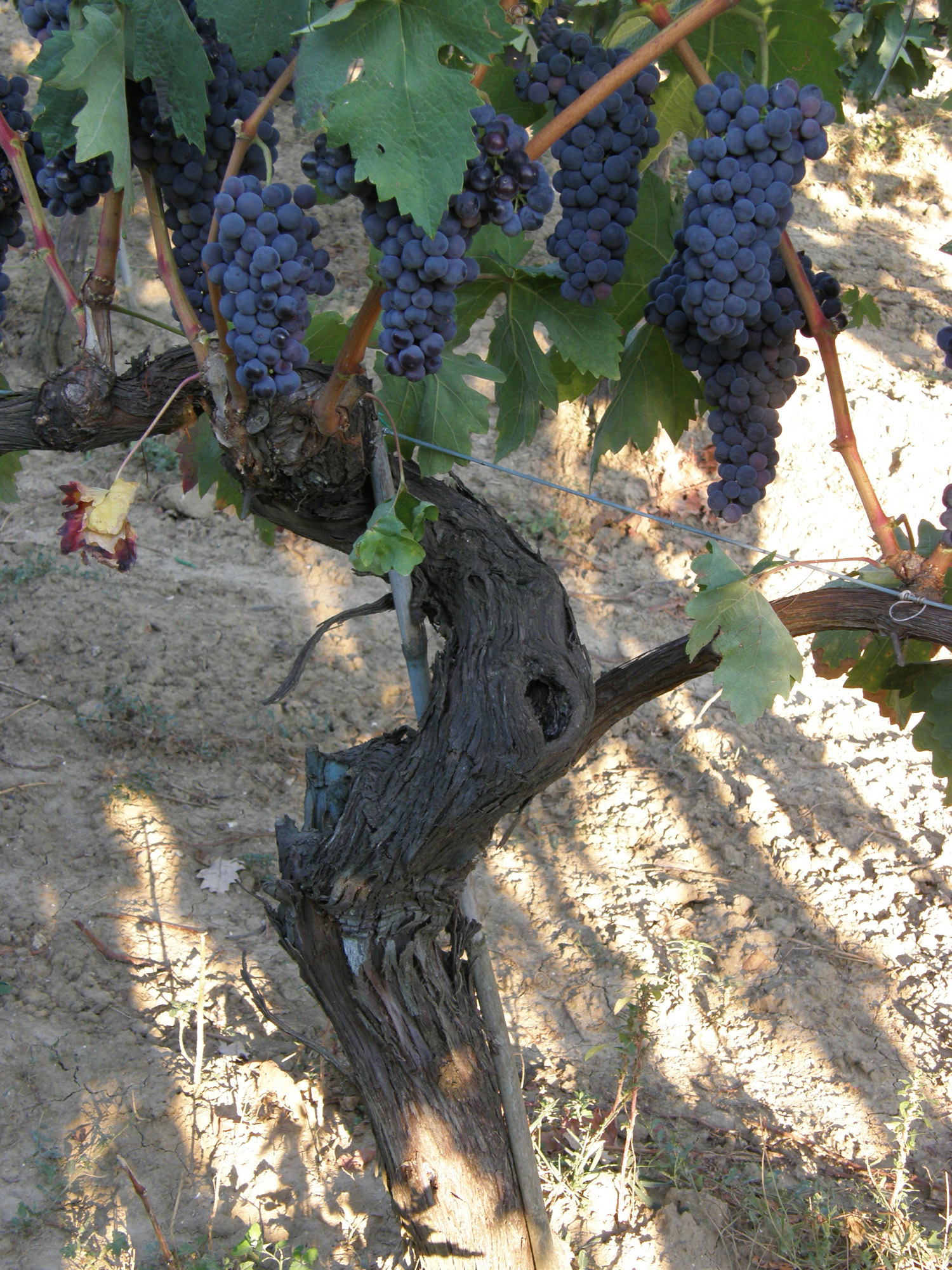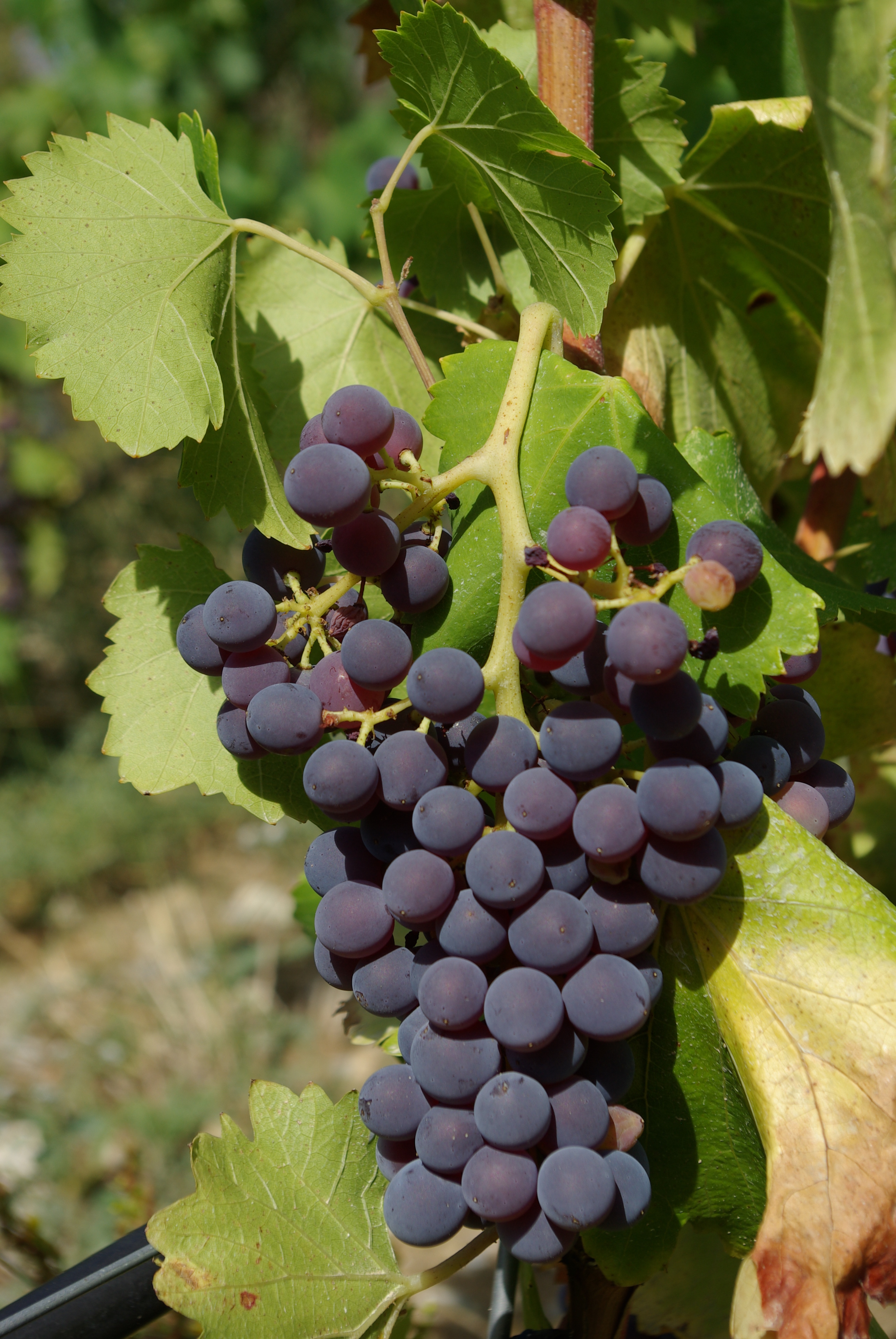|
Campo De Borja (DO)
Campo de Borja is a Spanish Denominación de Origen Protegida (DOP) for wines located in the Campo de Borja comarca, northwest of the province of Zaragoza (Aragon, Spain). It is a transition zone between the plains of the River Ebro and the mountains of the Sistema Ibérico. The DOP comprises 16 municipalities. These are Ainzón, Agón, Albeta, Ambel, Bisimbre, Borja, Bulbuente, Bureta, Fréscano, Fuendejalón, Magallón, Maleján, Mallén, Pozuelo de Aragón, Tabuenca and Vera de Moncayo. The Moncayo mountain is the dominant feature of the DOP and creates a microclimate which gives the wines a special character. History It is assumed that the ancient Romans introduced and developed grape-growing in this region, but the first written reference is a document in the archives of the Cistercian Monastery of Veruela which refers to donations of vineyards in the year 1203. During the centuries of Arab domination of the Iberian Peninsula, grape and wine production decreased and on ... [...More Info...] [...Related Items...] OR: [Wikipedia] [Google] [Baidu] |
Province Of Zaragoza
Zaragoza (), also called Saragossa in English,''Encyclopædia Britannica''Zaragoza (conventional Saragossa)/ref> is a province of northern Spain, in the central part of the autonomous community of Aragon. Its capital is the city of Zaragoza, which is also the capital of the autonomous community. Other towns in the province include La Almunia de Doña Godina, Borja, Calatayud, Caspe, Ejea de los Caballeros, Tarazona, and Utebo. Its area is 17,274 km², which makes it the fourth-largest Spanish province by land area. Its population was 954,811 in 2018, accounting for slightly over 72% of the entire population of Aragon; nearly 75% of those lived in the capital. Its population density was 51/km². It contains 292 municipalities, of which more than half are villages with fewer than 300 people. The main language throughout the province is Spanish (with official status), although Catalan is spoken in the easternmost part ( Bajo Aragón-Caspe comarca and Mequinenza municipality ... [...More Info...] [...Related Items...] OR: [Wikipedia] [Google] [Baidu] |
Continental (wine)
In viticulture, the climates of wine regions are categorised based on the overall characteristics of the area's climate during the growing season. While variations in macroclimate are acknowledged, the climates of most wine regions are categorised (somewhat loosely based on the Köppen climate classification) as being part of a Mediterranean (for example Tuscany), maritime (ex: Bordeaux) or continental climate (ex: Columbia ValleyA. Mumma 'The Washington wine difference: it's in the vineyard'' Wines & Vines, November 2005). The majority of the world's premium wine production takes place in one of these three climate categories in locations between the 30th parallel and 50th parallel in both the northern and southern hemisphere.T. Stevenson ''"The Sotheby's Wine Encyclopedia"'' pg 14-15 Dorling Kindersley 2005 While viticulture does exist in some tropical climates, most notably Brazil, the amount of quality wine production in those areas is so small that the climate effect ha ... [...More Info...] [...Related Items...] OR: [Wikipedia] [Google] [Baidu] |
Muscat Of Alexandria
Muscat of Alexandria is a white wine grape that is a member of the Muscat family of ''Vitis vinifera''. It is considered an "ancient vine", and wine experts believe it is one of the oldest genetically unmodified vines still in existence.J. Robinson ''Vines Grapes & Wines'' pg 185 Mitchell Beazley 1986 The grape originated in North Africa, and the name is probably derived from its association with Ancient Egyptians who used the grape for wine making. It is also a table grape used for eating and raisins. Muscat of Alexandria is cultivated very heavily on the island of Lemnos in the North Eastern Aegean region of Greece, and reputedly Cleopatra drank muscat wine from there. In Italy wine is made from the grape on the island of Pantelleria, and it is grown in Calabria and Sicily where it is known as ''Zibibbo''. In Spain, the grape is the sixth most planted white grape variety with grown in 2015, mainly in Málaga, Alicante, Valencia, and the Canary Islands. It is an important g ... [...More Info...] [...Related Items...] OR: [Wikipedia] [Google] [Baidu] |
Chardonnay
Chardonnay (, ; ) is a green-skinned grape variety used in the production of white wine. The variety originated in the Burgundy wine region of eastern France, but is now grown wherever wine is produced, from England to New Zealand. For new and developing wine regions, growing Chardonnay is seen as a 'rite of passage' and an easy entry into the international wine market. The Chardonnay grape itself is neutral, with many of the flavors commonly associated with the wine being derived from such influences as ''terroir'' and oak.Robinson, 2006, pp. 154–56. It is vinified in many different styles, from the lean, crisply mineral wines of Chablis, France, to New World wines with oak and tropical fruit flavors. In cool climates (such as Chablis and the Carneros AVA of California), Chardonnay wine tends to be medium to light body with noticeable acidity and flavors of green plum, apple, and pear. In warmer locations (such as the Adelaide Hills and Mornington Peninsula in Austral ... [...More Info...] [...Related Items...] OR: [Wikipedia] [Google] [Baidu] |
Grenache Blanc
Grenache blanc (; also known as garnatxa blanca in Catalonia) is a variety of white wine grape that is related to the red grape Grenache. It is mostly found in Rhône wine blends and in northeast Spain. Its wines are characterized by high alcohol and low acidity, with citrus and or herbaceous notes. Its vigor can lead to overproduction and flabbiness. However, if yields are controlled, it can contribute flavor and length to blends, particularly with Roussanne. Since the 1980s, it has been the fifth most widely planted white wine grape in France after Ugni blanc, Chardonnay, Semillon and Sauvignon blanc.J. Robinson (ed) ''The Oxford Companion to Wine'' Third Edition p. 334 Oxford University Press 2006 History Grenache blanc is thought to have originated as a mutation of the red version of Grenache in Spain. It then spread across the Pyrenees to France, finding a second home in the Rhône.Oz Clarke ''Encyclopedia of Grapes'' pg 113 Harcourt Books 2001 Wine regions Grenache bla ... [...More Info...] [...Related Items...] OR: [Wikipedia] [Google] [Baidu] |
Macabeo
Macabeo, also called Viura or Macabeu (, ), is a white variety of wine grape. It is widely grown in the Rioja region of northeastern Spain, the Cava producing areas south of Barcelona, and the Languedoc-Roussillon region of France. Spanish plantations stood at nearly in 2015, making it the second most grown white grape variety in Spain. In France, plantations accounted for in 2007. Since 2009, some Macabeo is grown in Israel. Styles and winemaking 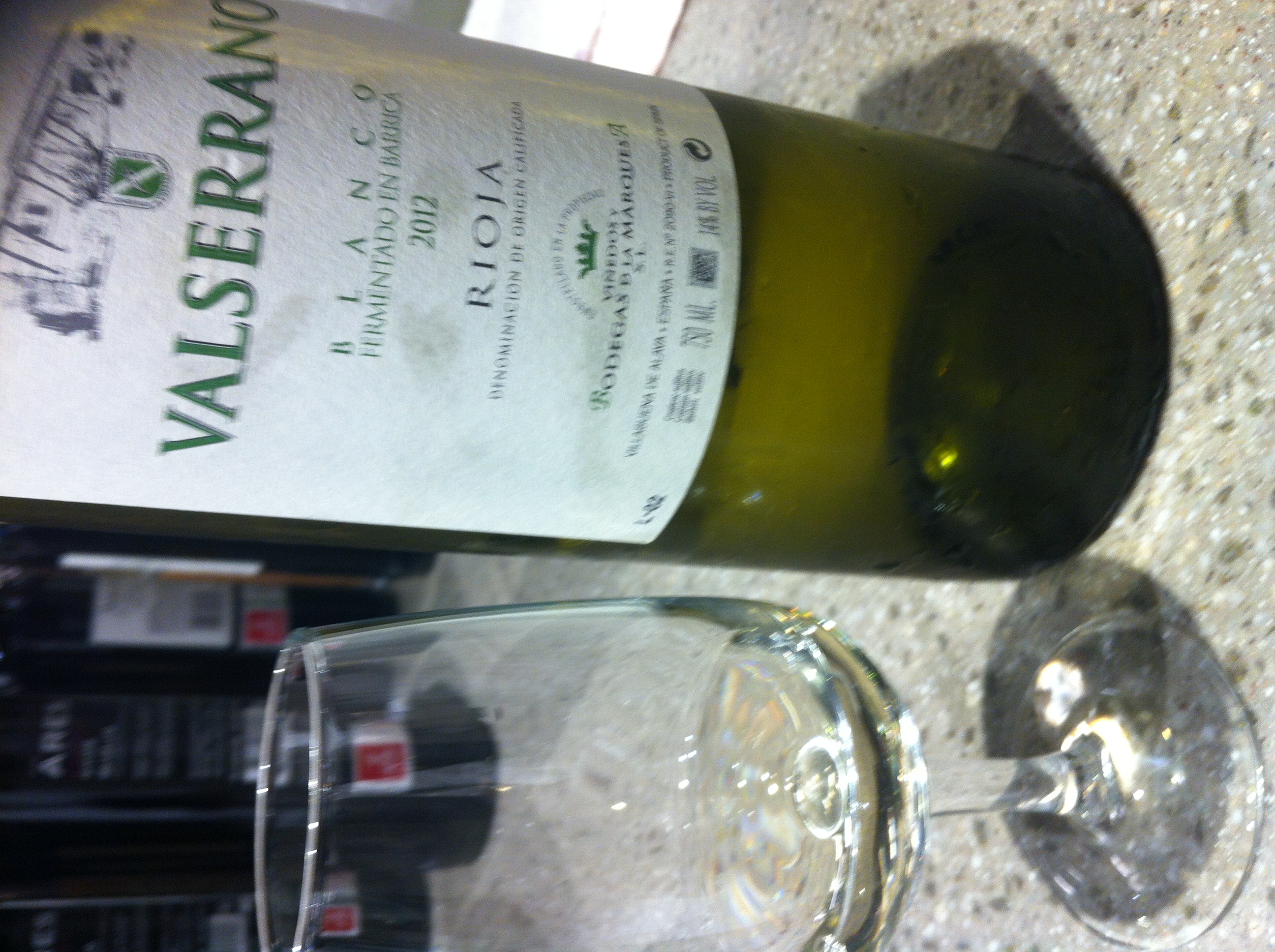 The grape is mostly used to make mildly acidic and young white wines mostly suitable for early c ...
The grape is mostly used to make mildly acidic and young white wines mostly suitable for early c ...
[...More Info...] [...Related Items...] OR: [Wikipedia] [Google] [Baidu] |
Syrah
Syrah (), also known as Shiraz, is a dark-skinned grape variety grown throughout the world and used primarily to produce red wine. In 1999, Syrah was found to be the offspring of two obscure grapes from southeastern France, Dureza and Mondeuse Blanche. Syrah should not be confused with Petite Sirah, a cross of Syrah with Peloursin dating from 1880. The style and flavor profile of wines made from Syrah are influenced by the climate where the grapes are grown. In moderate climates (such as the northern Rhone Valley and parts of the Walla Walla AVA in Washington State), they tend to produce medium to full-bodied wines with medium-plus to high levels of tannins and notes of blackberry, mint and black pepper. In hot climates (such as Crete, and the Barossa Valley and McLaren Vale regions of Australia), Syrah is more consistently full-bodied with softer tannin, jammier fruit and spice notes of licorice, anise and earthy leather. In many regions the acidity and tannin le ... [...More Info...] [...Related Items...] OR: [Wikipedia] [Google] [Baidu] |
Merlot
Merlot ( ) is a dark-blue-colored wine grape variety that is used as both a blending grape and for varietal wines. The name ''Merlot'' is thought to be a diminutive of , the French name for the blackbird, probably a reference to the color of the grape. Its softness and "fleshiness", combined with its earlier ripening, make Merlot a popular grape for blending with the sterner, later-ripening Cabernet Sauvignon, which tends to be higher in tannin. Along with Cabernet Sauvignon, Cabernet Franc, Malbec, and Petit Verdot, Merlot is one of the primary grapes used in Bordeaux wine, and it is the most widely planted grape in the Bordeaux wine regions. Merlot is also one of the most popular red wine varietals in many markets. This flexibility has helped to make it one of the world's most planted grape varieties. As of 2004, Merlot was estimated to be the third most grown variety at globally.J. Robinson (ed) ''The Oxford Companion to Wine'' Third Edition, Oxford University P ... [...More Info...] [...Related Items...] OR: [Wikipedia] [Google] [Baidu] |
Cabernet Sauvignon
Cabernet Sauvignon () is one of the world's most widely recognized red wine grape varieties. It is grown in nearly every major wine producing country among a diverse spectrum of climates from Australia and British Columbia, Canada to Lebanon's Beqaa Valley. This grape variety appeared in France in the 17th century as a result of natural crossbreeding. Its popularity is often attributed to its ease of cultivation—the grapes have thick skins and the vines are hardy and naturally low yielding, budding late to avoid frost and resistant to viticulture hazards. The classic profile of Cabernet Sauvignon tends to be full-bodied wines with high tannins and noticeable acidity that contributes to the wine's aging potential. In cool areas, it has flavors of blackcurrant and green pepper; in warmer places, it may taste like black cherry and olive; in very hot climates, it can have a jammy flavor. History and origins For many years, the origin of Cabernet Sauvignon was not cl ... [...More Info...] [...Related Items...] OR: [Wikipedia] [Google] [Baidu] |
Carignan
Carignan (; also known as Mazuelo, Bovale Grande, Cariñena, Carinyena, Samsó, Carignane, and Carignano) is a red grape variety of Spanish origin that is more commonly found in French wine but is widely planted throughout the western Mediterranean and around the globe. Along with Aramon, it was considered one of the main grapes responsible for France's wine lake and was a substantial producer in jug wine production in California's Central Valley but in recent years, it has been reborn as a flagship wine for many cellars in the south of France as well as in Catalonia.Oz Clarke ''Encyclopedia of Grapes'' pg 58 Harcourt Books 2001 Ampelographers believe that the grape likely originated in Cariñena, Aragon and was later transplanted to Sardinia, elsewhere in Italy, France, Algeria, and much of the New World. The variety was historically a component of Rioja's red wine blend. The grape's prominence in France hit a high point in 1988 when it accounted for and was France ... [...More Info...] [...Related Items...] OR: [Wikipedia] [Google] [Baidu] |
Tempranillo
Tempranillo (also known as Ull de Llebre, Cencibel, Tinto Fino and Tinta del País in Spain, Aragonez or Tinta Roriz in Portugal, and several other synonyms elsewhere) is a black grape variety widely grown to make full-bodied red wines in its native Spain. Its name is the diminutive of the Spanish ''temprano'' ("early"), a reference to the fact that it ripens several weeks earlier than most Spanish red grapes. Tempranillo has been grown on the Iberian Peninsula since the time of Phoenician settlements. It is the main grape used in Rioja, and is often referred to as Spain's noble grape. The grape has been planted throughout the globe's wine regions. In 2015, Tempranillo was the fourth most widely planted wine grape variety worldwide with under vine, of which 87% was in Spain where it is the most planted red grape variety. Unlike more aromatic red wine varieties like Cabernet Sauvignon, Sangiovese and Pinot noir, Tempranillo has a relatively neutral profile so it is often ... [...More Info...] [...Related Items...] OR: [Wikipedia] [Google] [Baidu] |
Grenache
Grenache (; ) or Garnacha () is one of the most widely planted red wine grape varieties in the world. Niels Lillelund: ''Rhône-Vinene'' p. 25, JP Bøger – JP/Politikens Forlagshus A/S, 2004. . It ripens late, so it needs hot, dry conditions such as those found in Spain, where the grape is believed to have originated. It is also grown in the Italian island of Sardinia, the south of France, Australia, and California's Monterey AVA, Paso Robles, Santa Barbara County and San Joaquin Valley. It is generally spicy, berry-flavored and soft on the palate and produces wine with a relatively high alcohol content, but it needs careful control of yields for best results. Characteristic flavor profiles on Grenache include red fruit flavors (raspberry and strawberry) with a subtle, white pepper spice note. Grenache wines are highly prone to oxidation, with even young examples having the potential to show browning (or "bricking") coloration that can be noticed around the rim when ... [...More Info...] [...Related Items...] OR: [Wikipedia] [Google] [Baidu] |
